Cancer Prevention
Cancers develop due to many factors. Usually it is a mixture of these that leads to its development. Some of these factors are under our control and others are not. Cancer prevention strategies focus on modifying or eliminating factors that are under our control.
A cancer prevention strategy should include a collective effort by the city/state/country and individual effort by people. Collective efforts should focus on aspects such as controlling environmental pollution, limiting occupational exposure to cancer causing chemicals and products, banning asbestos and related products, having state and national policies on cancer prevention, screening, education etc.
This section focuses mainly on what individuals can do on their own to reduce their risk of getting cancer. The main areas that an individual should focus to reduce the risk of cancer include-
- Stop Smoking and Tobacco use
- Limit Alcohol Intake
- Maintain a Healthy Diet
- Regular Physical Activity
- Reduce Obesity
- Cancer Vaccinations
- Cancer screening
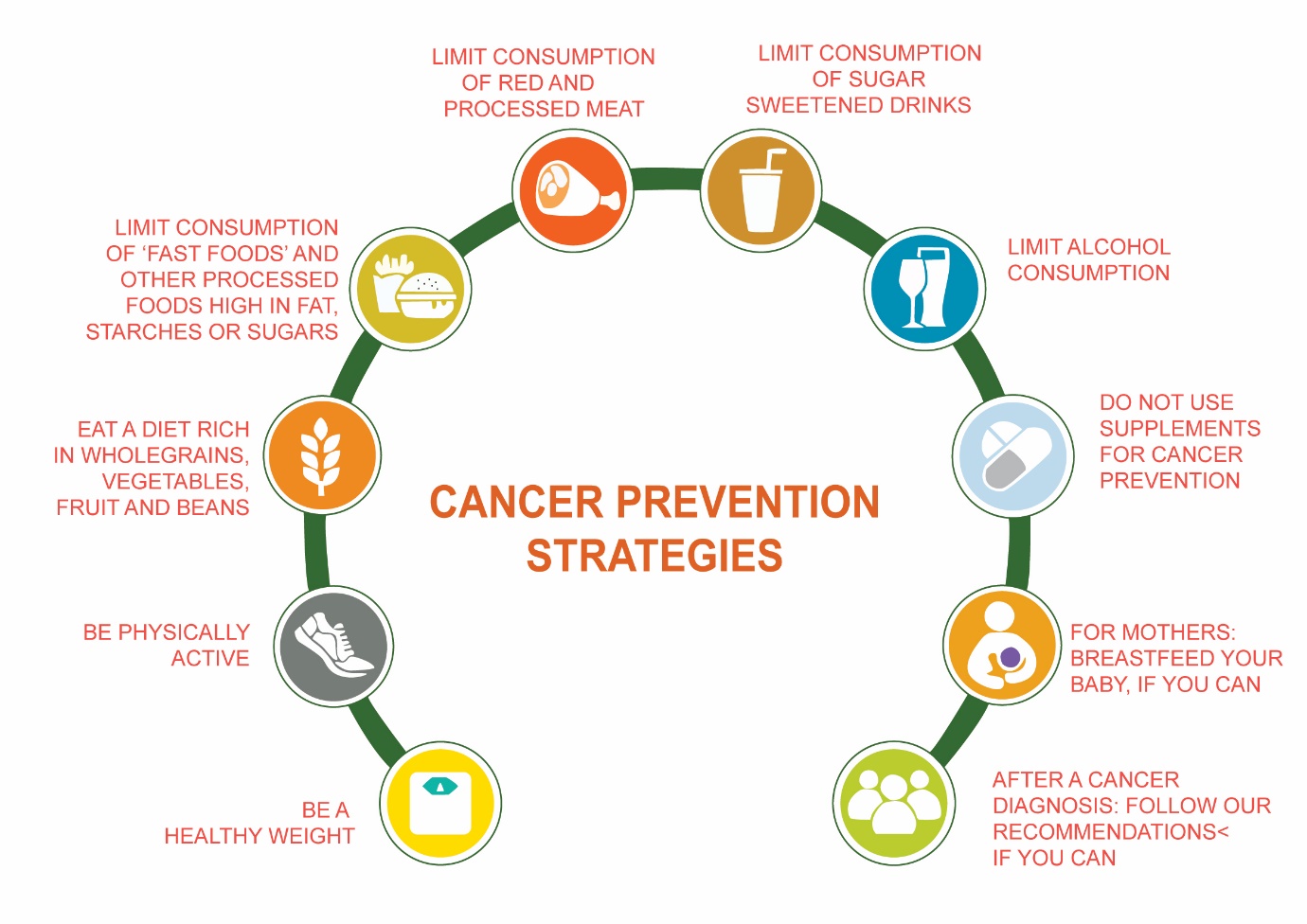
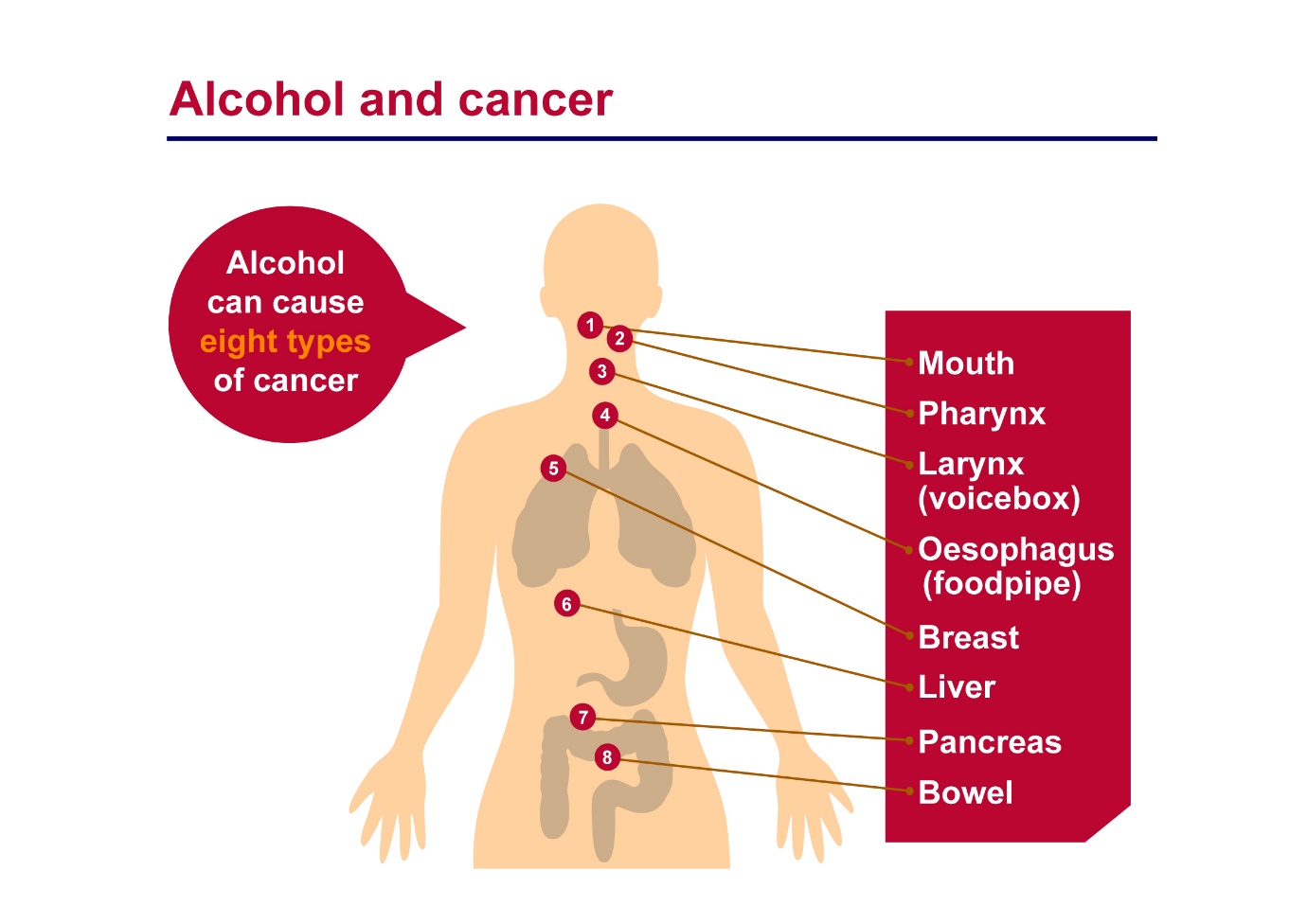
Alcohol is a very important risk factor for cancer. Alcohol is associated with the development of many cancers including mouth cancer, oesophageal cancer (gullet), throat cancer and larynx (voice box), liver cancer, bowel cancer and breast cancer.
Alcohol can cause cancer in many ways. It acts as an irritant in the mouth and throat leading to cell damage. Once alcohol is ingested, it is metabolised in the body into by products. These by products act as chemicals causing damage to cells in the bowel and liver. Alcohol also raises the levels of the hormone oestrogen in the body, which in turn increases the risk of development of breast cancer.
Heavy alcohol intake can lead to reduced levels of a vitamin B called folate which increases the risk of colon and breast cancer.
Alcohol can cause cancer even when consumed in small amounts. Having one drink per day increases the risk of getting cancer by 4%-7%. The risk is increased with increasing amounts of alcohol consumed. People who smoke and drink will have a higher risk as tobacco and alcohol work together to damage the body.
There is no safe limit for alcohol, but the risk is limited if a man or a woman limits his/her drink to no more than 2 units a day or 14 units a week. One unit of alcohol is equal to about 250ml of beer or one small glass of wine or one measure of spirit(25ml).
Reducing alcohol intake to below these levels or abstaining completely, reduces the risk of getting cancer.
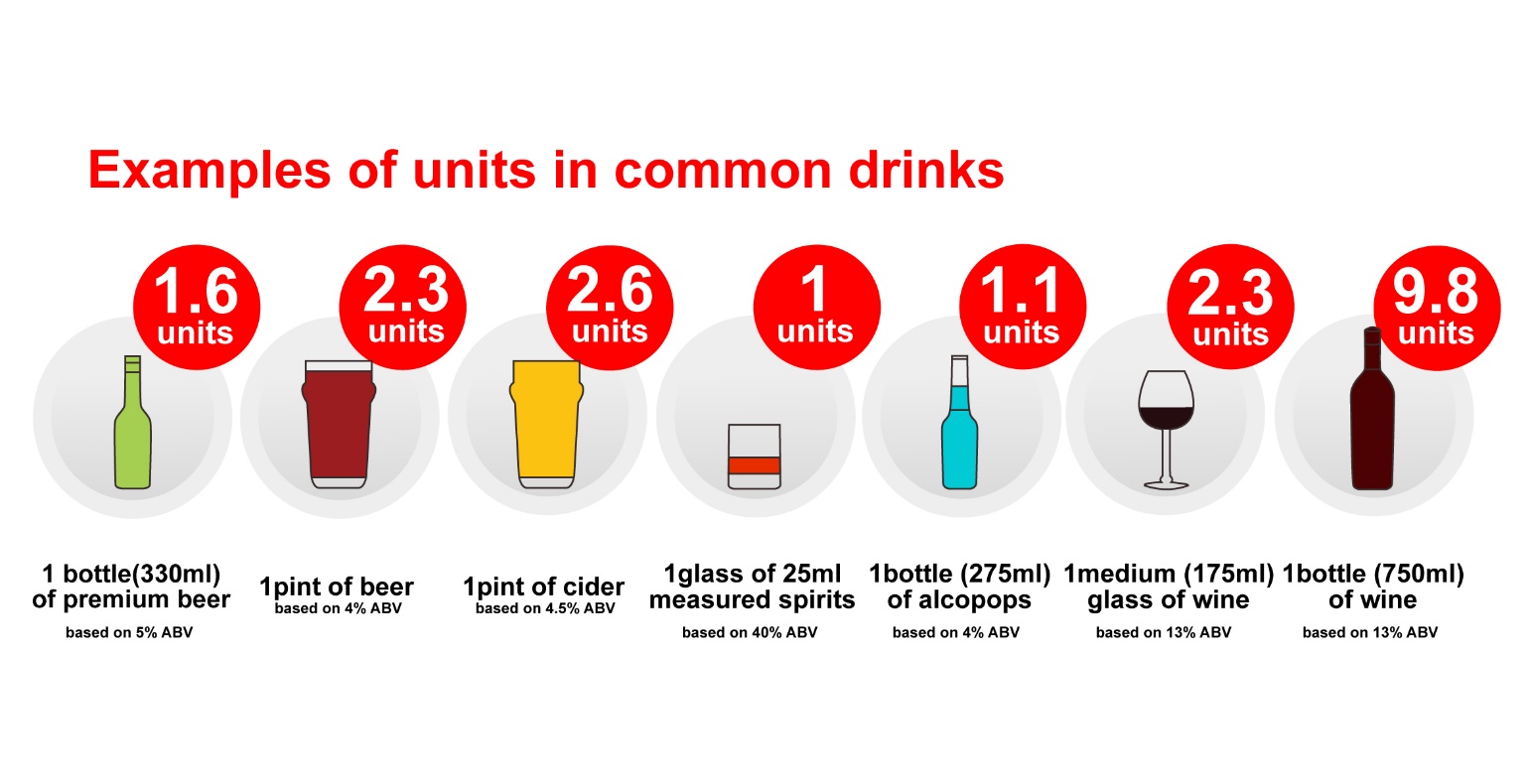

Diet plays an important role in the development of cancer. Therefore, having a healthy diet reduces the risk of getting Cancer.
Healthy and balanced diet
It is important to eat a healthy and balanced diet. This may lower the risk of developing Cancer.
A balanced diet should include 40-60% of carbohydrates, 10-30% of proteins and 20-30% fats.
Carbohydrates such as rice and wheat should be used. Whole grain carbohydrates have higher amount of fibre and are better than refined grain substances.
Proteins should be made up of beans, peas, soya products or unsalted nuts and if non-vegetarian, fish and chicken. Red meats such as lamb, mutton, pork, beef and processed food high in trans fat should be kept to a minimum.
Less than 10% of calories should be made up from saturated fats (cheese, butter, ghee, ice cream, fats from meat). Foods high in sugar(biscuits, sweets) and foods high in fats should be consumed at a minimum.
Fruits and Vegetables
Research suggests that it is good to consume at least five portions of fruit and vegetables in a day. They are a good source of vitamins, minerals and fibre. A diet rich in fruit and vegetables can reduce the risk of colon cancer.
Specific Diets and Foods
It is common to find information on the internet about specific foodstuffs that will reduce certain types of cancer. Overall, there is no definite evidence in research, that such diets or supplements help reduce the risk of cancer. Eating a healthy balanced diet as listed above is the best option.
Obesity is the presence of excess weight in the body. Being overweight or obese refers to a weight more than the normal range. Body mass index (BMI) is used to determine whether someone is obese or not. BMI is calculated by dividing the weight in kilograms by height in metres squared. Being overweight is defined as BMI greater than 25 and less than 29.9kg/m2. Being obese is defined when BMI is greater than 30kg/m2.
Obesity is associated with an increased risk of developing many cancers including colon and rectum cancer, postmenopausal breast cancer, oesophagus cancer, uterus cancer and kidney cancers. In the western world, obesity has been estimated to cause about 20% of cancers. Obesity is increasing in India every year.
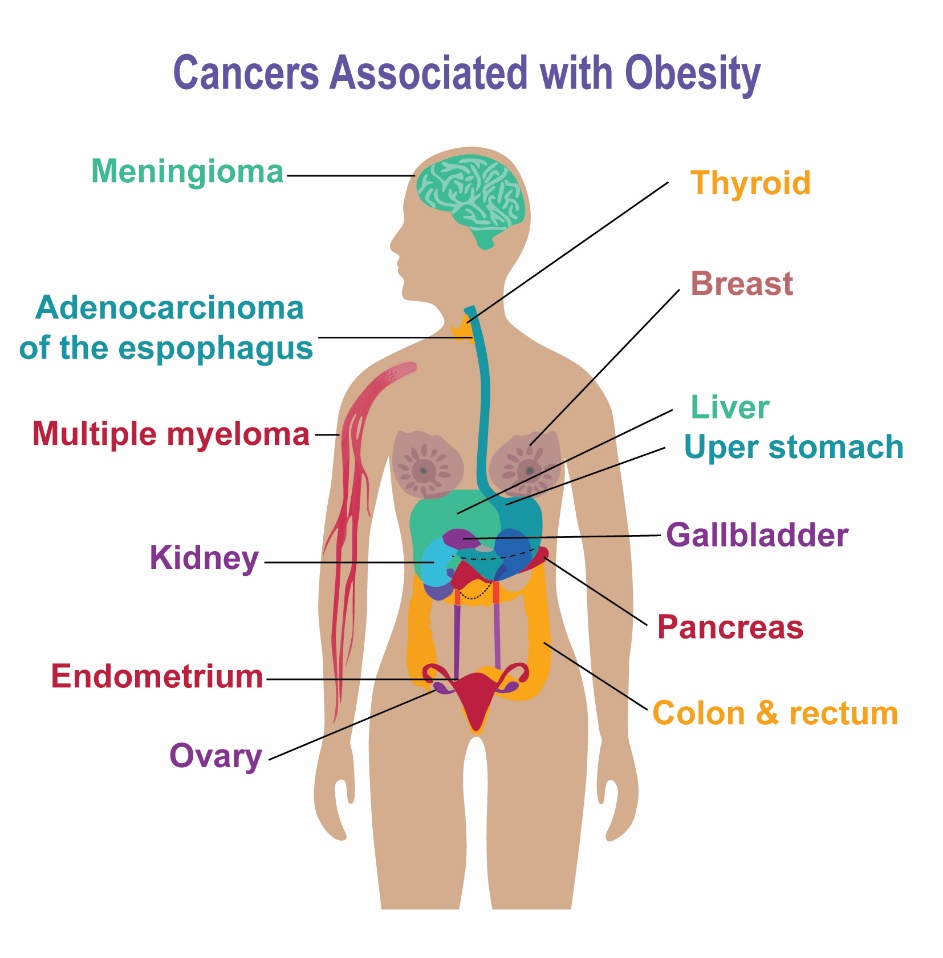
Treatment of Obesity
The goal of treatment of obesity is not only to reduce the risk of getting cancer but also to reduce the risk of developing diabetes, high blood pressure or heart disease.
Treatments for obesity involve either decrease in calorie intake or increase in calorie expenditure. Usually a mixture of the two options will help in reducing weight effectively.
The initial phase of weight loss can be achieved with decreased calorie intake(dieting) and this can be followed up by an exercise programme.
Dieting
About 25kcal is required to maintain 1kg of weight in a normal adult. Therefore, for a 70kg wighing person this is equal to 1750kcal. A range of + or- 20% is added to that figure to account for differences between people. Planning a diet which has less calories than the above (25kcal/kg) can help in weight reduction.
Exercise
Increase energy expenditure through physical activity is quite effective in long term maintenance of weight.
Surgery
Surgical approaches for treating obesity (bariatric surgery) are becoming more commonplace. Patients suitable for such surgeries should have a BMI over 40, have failed previous non-surgical attempts at weight loss and are well informed about the procedure. Surgery has also been effective in weight reduction of patients with BMI less than 40.

Reduced physical activity increases the risk of getting cancer. Moderate physical activity reduces the risk of developing colon, breast, pancreatic, liver and stomach cancers.Of all these cancers, the maximum benefit of physical activity is on breast and colon cancers.
The optimum amount of activity needed to reduce this risk is unknown.
Stop Smoking and Tobacco Use
Use of Tobacco either by smoking or other means is the causative agent for three of the top five causes of death. Tobacco use can cause cancer, heart disease, stroke, COPD and chest infections. It is predicted that by 2030, tobacco use will cause the death of about 8 million people worldwide and it will be responsible for about 10% of deaths worldwide.
Smokers will lose on average about 10 years of their life and about 50% of smokers will die of a tobacco related disease.
The World Health Organisation led GATS survey in India in 2010 showed that more than 35% of adults in India use tobacco in some form or other. Two thirds of those use smokeless tobacco. Khaini (mixture of tobacco and lime) is the commonest form of smokeless tobacco used followed by gutkha. Among smoking tobacco, beedi is more commonly used than a cigarette. Chewing tobacco causes changes in the mouth and throat over a period of time and these changes can then lead to the development of cancer.
Smoking and Cancer
Smoking is a very important risk factor for the development of Cancer. Smoking increases the risk of development of cancers including Lung, oesophagus, bladder and cancers of the head and neck region including mouth, throat, tongue etc. In India, the use of smokeless tobacco is high, and therefore there is a high incidence of cancers arising in the mouth region.
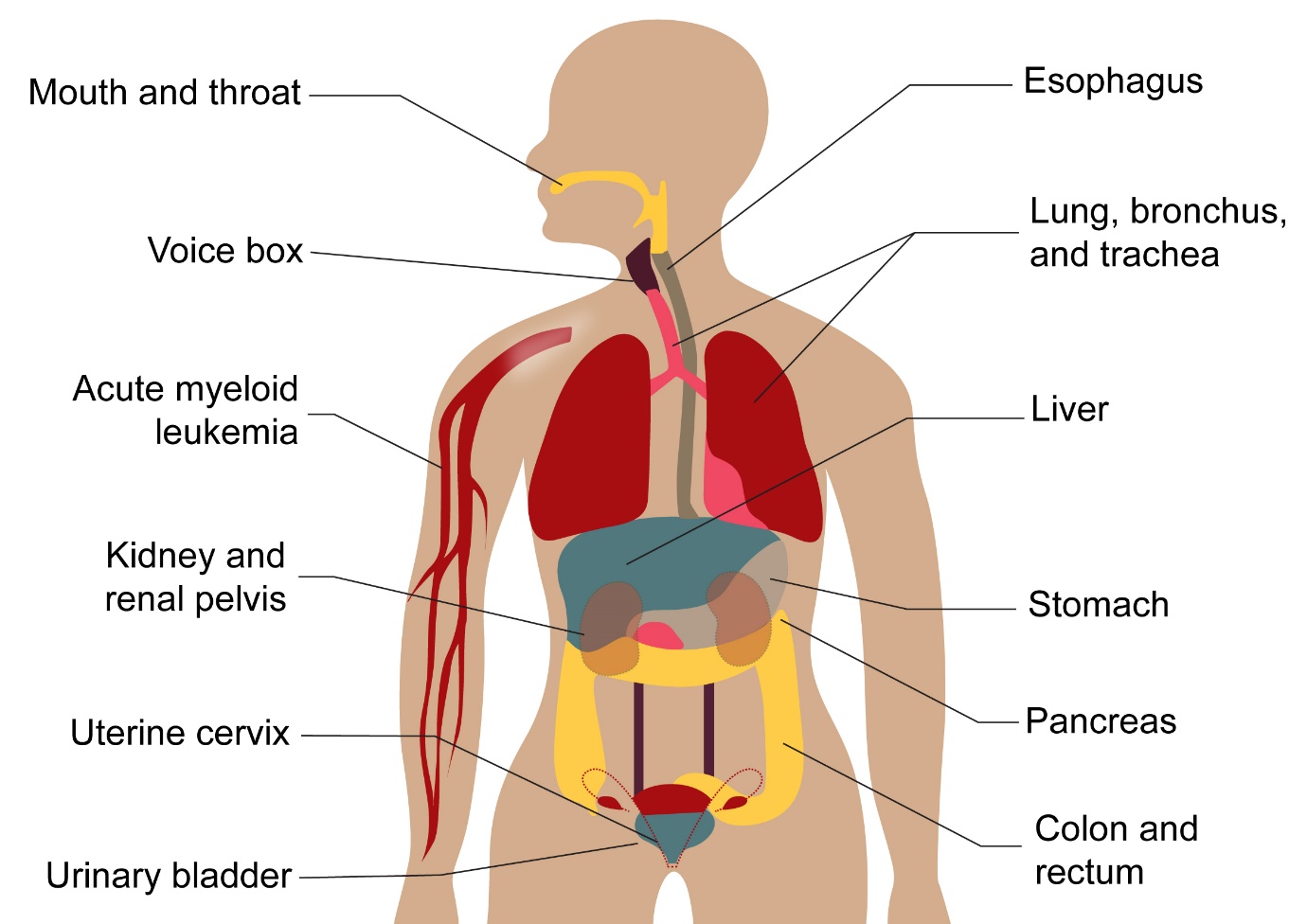
There are about 70 known chemicals in tobacco smoke that can cause cancer along with hundreds of other chemicals.
The cancer causing chemicals present in tobacco smoke include
- Tar
- Polonium-210
- cadmium
- benzene
- nickel
- arsenic
- formaldehyde
- polycyclic aromatic hydrocarbons
- acrolein
- nitrosamines
- chromium
- and other chemicals
There is also ammonia, carbon monoxide, nitrogen oxides, hydrogen cyanide and many others.

How does smoking cause cancer
The chemicals in tobacco that are inhaled or ingested cause damage to normal structures in the body. For example, nitrogen oxides can cause narrowing of the airways in the lung causing breathlessness. Hydrogen cyanide and ammonia affect the cleaning mechanisms of the lungs and therefore prevent cleaning up of toxins present in the lung. Radioactive polonium-210 which is present in cigarette smoke can cause radiation damage to the cells lining the airways.
Some of these carcinogens are absorbed into the body and can affect other organs, increasing the risk of developing cancer in those organs.
The chemical carcinogens combine with DNA in the cells causing permanent mutations in genes.
This can lead to loss of growth control mechanisms in the cell, leading to cancer. There is a lot of evidence linking smoking directly to the development of cancer.
Is Tobacco Addictive
Tobacco is definitely addictive. When tobacco is chewed or smoked, it contains nicotine which is addictive. It is as potent as heroin or cocaine in terms of causing addiction. As soon as cigarette smoke is inhaled, nicotine reaches the brain and stimulates release of dopamine which gives a pleasure effect. A link is formed between smoking and feeling good. This leads to habituation and then addiction. Stopping smoking suddenly causes withdrawal effects such as irritability, craving, restlessness, anxiety, difficulty sleeping and weight gain.
After stopping smoking, these withdrawal effects settle down gradually in about a month.
Smoking Cessation
Quitting smoking or chewing tobacco should be high priority. Research shows that stopping smoking for longer than 10 years will reduce the risk of getting cancer back to that of a non smoker. Also, apart from reducing cancer risk, it leads to reduction in the risk of heart disease and stroke.
Stopping smoking will lead to a healthier life generally and will help save a lot of money too.
Stopping smoking even after diagnosis of cancer can help. It results in better control of cancer and reduces risk of relapse.
The following steps can be taken when you plan to quit smoking
- Set a start date
- Tell friends and family that you are quitting
- Remove cigarettes and other tobacco products from home, work, car etc.
- Anticipate and plan for difficult times ahead while quitting
- Consider exercising regularly
- Stay away from smokers or places associated with smoking
- Don’t give up even if you start smoking again. It commonly takes several attempts before success
- There are lot of medicines and other complimentary therapies that can help in giving up tobacco.
- These are listed below.
Drugs to help quit smoking
The most effective treatment therapies for smoking cessation are use of nicotine replacement,bupropion(zyban) and varenicline.
Nicotine replacement is available in the form of a patch that is applied to the skin, nicotine chewing gums, nicotine sprays and lozenges. The agents help to control the withdrawal effects of stopping smoking. Speak to a doctor regarding which option to use and the correct strength to use. The chance of continued dependence on nicotine while using patches or other formulations is rare.
Bupropion is a drug used to help quit smoking. It can be taken as a tablet once a day starting one week before the “planning to quit” date. It is taken for 12 weeks. Using this drug doubles the chance of quitting smoking than without it.
Varenicline is another drug used to help stop smoking. It is started a week before quitting smoking.
It is taken as a tablet and is given for 12 weeks. Use can be extended for another 12 weeks if successful.
All of these therapies have side effects and it is important to speak to a doctor before going on these therapies.
Alternative therapies
Various alternative therapies are available to help stop smoking. Behavioural therapy(counselling), acupuncture and hypnotherapy are some options that can be tried.
A combination of behavioural therapy and drugs increases the likelihood of quitting than individual therapy alone.
Good encouragement and support from family and friends plays an important part in the process.
Vaccines and Infections
A lot of cancers have infections as causative agents particularly some types of viral infections.These viral infections increase the risk of cancer by causing changes in normal cells.
The viruses associated with cancer include
HPV
This is human papilloma virus which is a causative agent in the development of cervical cancer, anal cancers and some head and neck cancers.
Hepatitis B and C
These viruses increase the risk of developing hepatocellular (Liver) cancer
HTLV 1
This virus can cause some types of Leukaemia
HIV
Human immunodeficiency virus which causes AIDS can cause some lymphomas and Kaposi’s sarcoma.
EBV
Epstein Barr Virus causes Burkitt’s lymphoma and Nasopharyngeal cancer.
Majority of these viruses spread through coming in contact with infected blood or body fluids. These can be prevented with use of disposable syringes, screening of blood or blood products appropriately prior to transfusion.
Vaccines are available for prevention of infections with two of these viruses.
HPV Vaccine
Vaccines are available to prevent HPV infection which leads to cervical cancer mainly. HPV is a virus that is transmitted from person to person by skin contact through sexual activity.
This vaccine is offered to girls aged 9 to 26 years of age. Ideally the vaccine should be given before the girl or woman becomes sexually active as this provides maximum benefit. The vaccination can also be given after becoming sexually active but the benefit may be limited at that point as the woman may have already been exposed to the virus by then. Three doses of the vaccine are required to gain full immunity.
Two formulations are available which are given as injections. Gardasil- given as three doses at 0, 2 and 6 months, and Cervarix-given as three doses at 0, 1 and 6 months. Booster doses after that are not needed.
This vaccine significantly reduces the risk of cervical cancer, which is one of the commonest cancers in India.
Hepatitis B Vaccine
A vaccine is available for prevention of Hepatitis B infection. This vaccine is recommended to all individuals in India as the prevalence of Hepatitis B is very high. The vaccine is given commonly to children in the immunisation programme. Those who have not had the vaccine through such programme should consider vaccination as this will protect against Hepatitis B and against the risk of developing hepatocellular carcinoma. This vaccine is given as an injection at 0, 1 and 6 months.




